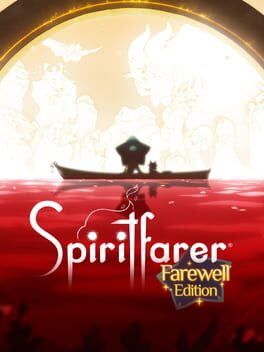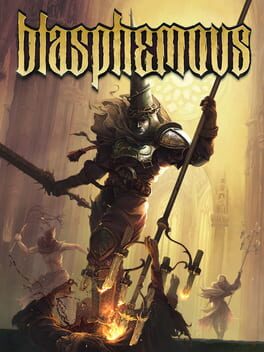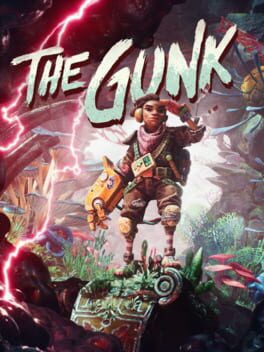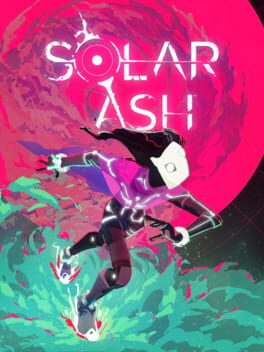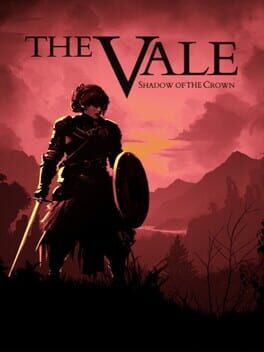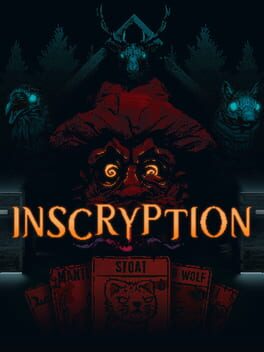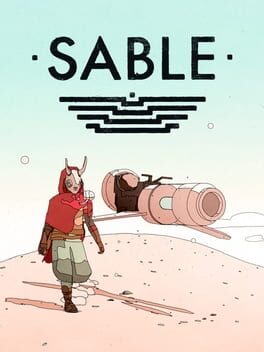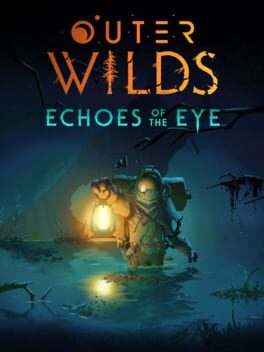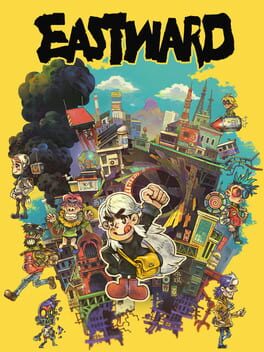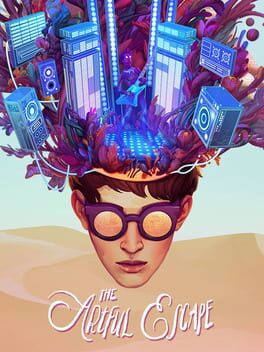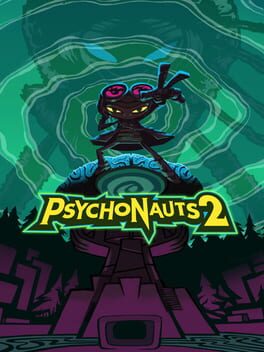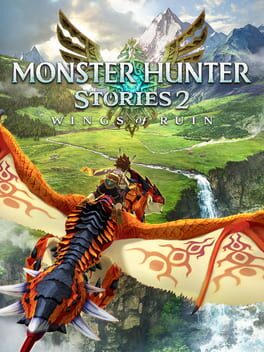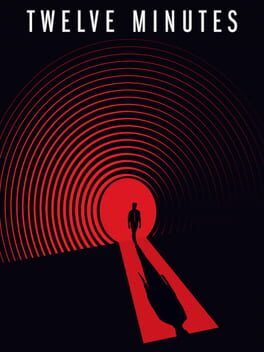Anthrazit
BACKER
118 Reviews liked by Anthrazit
It's really hard to gauge how much quality has to do with recognition.
Jotun, Thunder Lotus' first release, was, in my humble, a disaster. Back when I played it I tried to make every gaming purchase, even a risky one, count, extracting as much enjoyment from them as possible. But Jotun showed me such horrible design decisions every step of the way that several levels in I dropped it without regret. Sundered, their next game, got mixed reception upon release, so I ignored it.
Now here's Spiritfarer, getting nominated for stuff and praised by reviewers I like. It's also comfort food tailor made for me specifically: hand-drawn graphics, what attracted me to this team in the first place, platforming, Persona-esque daily grind with character study to boot and that sweet theme of death I fell in love with since Valkyrie Profile. Maritime setting! Metroidvania elements! Co-op! Let's go already!
The lackluster action of the studio's previous titles gets rolled back here in favor of a chill, beginner friendly experience without hard and explicit fail states. As the player tends to spirits they fare into afterlife, they go back and forth between simple minigames on their ship and exploration of islands. The results of both are parts of a feedback loop: gathering stuff, some of it in service of the spirits' earthly and questly needs, some to build structures to gather even more stuff with. This process is marred by a sense of severe linearity, as by the first 5th of the game all the available types of resources have revealed themselves to the player and since then progress only in value, without variation in source or usage. Each tier of value becomes available more or less precisely as the next section of the world map opens up.
Only the spirits are a saving grace, they earn this game all of its stars. They often shake the player out of repetition by where they come from or what they require, which puts emphasis on the aspects of gameplay one may take for granted. Alice the Hedgehog for example may ask for a relocation of her house, which in this game means rearranging the whole ship since every building is shaped like a crude tetromino. Beverly the Smolbird is small, often lost in the visual detail and thus may end up left to starve unattended.
Out of all the cute and charming characters, the one I ended up having the biggest emotional response to was Jackie, from the Farewell update. I hate him, he's such a piece of garbage that every line out of his mouth made me cuss. And he knows it! And the game knows as well. The game's writing in general left me cold, it has a very 2020 internet quality to it, if that makes any sense. But with that guy it transcended, hit something special, at least for me. This emptiness I haven't felt since teenagerhood, one that comes from the realization that some people are shit and neither you, nor they can really do anything about it.
Unfortunately, all of that beautiful hate and emptiness is built on a very wobbly foundation. The ship that the player travels on is a visual metaphor for the whole game - a lot of structures and systems struggling to
exist on top of the Unity engine instead of naturally extending it. It's true on both technical and gamedesign fronts. In the former case, it means various in-game events contradicting each other: taking
interactability away from important objects, de- and respawning player characters when things get too crazy and sometimes just freezing the characters in place. In terms of gamedesign, there are glaring, basic
mistakes, like character visibility - it's possible to lose one's position on the screen, easy to get obscured by some foreground elements. And with how lightweight the characters are, one is likely to then misposition
themselves, making the game's rudimentary platforming more cumbersome than cathartic. All of this is made twice as bad with co-op, where the camera is incapable of following the players' speeds, often leaving one or
both off screen. With the second player controlling Daffodil the Cat, a character two times shorter than the main girl Stella, they will have the worst time exploring interiors of numerous buildings scattered throughout
the game, as the facades will keep them obscured basically at all times.
I take no joy in this criticism. While I do cherish the heights the new chillout approach let the team reach with this game, those are but a fraction of dozens of hours this game requires to complete. For people like myself, who enjoy the fantasy of being effective and productive every day, the menial labor of this game's grind is fine, it's kind of a part of that fantasy to be honest. But to anybody without these predispositions reaching "the good parts" will most likely not be worth it. One thing I wish Thunder Lotus does with a next project is stick to a simpler, more immediate gameplay concept and polish up some fundamentals.
Here's to a better next one.
Jotun, Thunder Lotus' first release, was, in my humble, a disaster. Back when I played it I tried to make every gaming purchase, even a risky one, count, extracting as much enjoyment from them as possible. But Jotun showed me such horrible design decisions every step of the way that several levels in I dropped it without regret. Sundered, their next game, got mixed reception upon release, so I ignored it.
Now here's Spiritfarer, getting nominated for stuff and praised by reviewers I like. It's also comfort food tailor made for me specifically: hand-drawn graphics, what attracted me to this team in the first place, platforming, Persona-esque daily grind with character study to boot and that sweet theme of death I fell in love with since Valkyrie Profile. Maritime setting! Metroidvania elements! Co-op! Let's go already!
The lackluster action of the studio's previous titles gets rolled back here in favor of a chill, beginner friendly experience without hard and explicit fail states. As the player tends to spirits they fare into afterlife, they go back and forth between simple minigames on their ship and exploration of islands. The results of both are parts of a feedback loop: gathering stuff, some of it in service of the spirits' earthly and questly needs, some to build structures to gather even more stuff with. This process is marred by a sense of severe linearity, as by the first 5th of the game all the available types of resources have revealed themselves to the player and since then progress only in value, without variation in source or usage. Each tier of value becomes available more or less precisely as the next section of the world map opens up.
Only the spirits are a saving grace, they earn this game all of its stars. They often shake the player out of repetition by where they come from or what they require, which puts emphasis on the aspects of gameplay one may take for granted. Alice the Hedgehog for example may ask for a relocation of her house, which in this game means rearranging the whole ship since every building is shaped like a crude tetromino. Beverly the Smolbird is small, often lost in the visual detail and thus may end up left to starve unattended.
Out of all the cute and charming characters, the one I ended up having the biggest emotional response to was Jackie, from the Farewell update. I hate him, he's such a piece of garbage that every line out of his mouth made me cuss. And he knows it! And the game knows as well. The game's writing in general left me cold, it has a very 2020 internet quality to it, if that makes any sense. But with that guy it transcended, hit something special, at least for me. This emptiness I haven't felt since teenagerhood, one that comes from the realization that some people are shit and neither you, nor they can really do anything about it.
Unfortunately, all of that beautiful hate and emptiness is built on a very wobbly foundation. The ship that the player travels on is a visual metaphor for the whole game - a lot of structures and systems struggling to
exist on top of the Unity engine instead of naturally extending it. It's true on both technical and gamedesign fronts. In the former case, it means various in-game events contradicting each other: taking
interactability away from important objects, de- and respawning player characters when things get too crazy and sometimes just freezing the characters in place. In terms of gamedesign, there are glaring, basic
mistakes, like character visibility - it's possible to lose one's position on the screen, easy to get obscured by some foreground elements. And with how lightweight the characters are, one is likely to then misposition
themselves, making the game's rudimentary platforming more cumbersome than cathartic. All of this is made twice as bad with co-op, where the camera is incapable of following the players' speeds, often leaving one or
both off screen. With the second player controlling Daffodil the Cat, a character two times shorter than the main girl Stella, they will have the worst time exploring interiors of numerous buildings scattered throughout
the game, as the facades will keep them obscured basically at all times.
I take no joy in this criticism. While I do cherish the heights the new chillout approach let the team reach with this game, those are but a fraction of dozens of hours this game requires to complete. For people like myself, who enjoy the fantasy of being effective and productive every day, the menial labor of this game's grind is fine, it's kind of a part of that fantasy to be honest. But to anybody without these predispositions reaching "the good parts" will most likely not be worth it. One thing I wish Thunder Lotus does with a next project is stick to a simpler, more immediate gameplay concept and polish up some fundamentals.
Here's to a better next one.
Blasphemous
2019
I would lie if I said that I could follow any of the lore in this game even in the slightest, it went way over my head. Still, I can absolutely appreciate the worldbuilding achieved and admire the depth and consistency present in every aspect of the storytelling, even if it isn't the most digestible narrative. It certainly feels fresh in the mythology and cultural background used, even if the tone and gruesome nature mirrored in the gameplay is familiar in the genre.
What drove me to almost 100% this game is a really tight gameplay loop where most collectibles serve an in world purpose and are hidden at a perfectly balanced rate, where you actually feel like you can totally collect everything without investing dozens of extra hours searching every corner. This is also helped by a strong map that removes frustration by showing you when a room is or isn't a dead end if you pay attention.
The boss fights are definite highlights, offering creative mechanics and making the fights clearly accessible to master with the moves available to you, avoiding big frustration points often present in these tough Souls-likes. As tight as the combat is, the platforming didn't work that smoothly too often, unfortunately, even if the added speedrun challenges were extremely fun to master once accepting the quirks of the platforming.
In general, there has been a lot of work being done on the game in the form of free updates since release. Since this was my first time playing, I can't speak to the differences, but I really enjoy how they implemented the new content into the base game, where I didn't know something was added until looking it up specifically, which makes Blasphemous at this point a really nice package and one of the better metroidvanias out there.
What drove me to almost 100% this game is a really tight gameplay loop where most collectibles serve an in world purpose and are hidden at a perfectly balanced rate, where you actually feel like you can totally collect everything without investing dozens of extra hours searching every corner. This is also helped by a strong map that removes frustration by showing you when a room is or isn't a dead end if you pay attention.
The boss fights are definite highlights, offering creative mechanics and making the fights clearly accessible to master with the moves available to you, avoiding big frustration points often present in these tough Souls-likes. As tight as the combat is, the platforming didn't work that smoothly too often, unfortunately, even if the added speedrun challenges were extremely fun to master once accepting the quirks of the platforming.
In general, there has been a lot of work being done on the game in the form of free updates since release. Since this was my first time playing, I can't speak to the differences, but I really enjoy how they implemented the new content into the base game, where I didn't know something was added until looking it up specifically, which makes Blasphemous at this point a really nice package and one of the better metroidvanias out there.
Tales of Arise
2021
Tales of Arise is a complete JRPG package polished from start to finish unlike many others. The battle system is carried by incredibly varied and fluid animations and playstyles while being hindered by finicky menu management of loadouts of your AI companions, the story is interesting throughout even if it played it a bit too safe in the end and the characters are lovable and have great dynamics... Okay this out of the way, I wanted to talk about something weirdly specific that stood out to me about this game:
The economy of ressources and rewards is amazing. On Normal difficulty I always felt like I was just scraping by in terms of money, right until the point where I was mentally getting ready to wrap up, at which point the tight grip loosened, which was remarkable to me and felt perfectly balanced.
Another aspect of that are the skill points. So you unlock a lot of small skill trees by doing side quests, achieving certain milestones with a character or progressing the main story, but by default regular fights really don't give you that many points to invest. This is where side quests come in, which almost always have a hefty skill point reward in addition to other rewards, which made them absolutely addictive to me, since you could essentially choose your reward and the balance being such that it always felt great to be able to finally afford a new attack or stat bonus or complete a skill tree for the completion bonus. Even when mostly clearing out all the side quests in the game available in the first playthrough I still didn't finish all the skill trees but ended up at a point where I was satisfied with my characters. All that with barely any grinding required. That is honestly an incredible feat and something to be studied for its game design balance and a hook that drew me deeper into the systems of Arise. And this is not even mentioning other rewards like recipes or cosmetics, which I also really enjoyed.
Tales of Arise was my first Tales game as you could probably tell if any of the systems I described are series staples refined over decades, but this game certainly made a great impression and while other entries in the franchise never looked appealing to me, I am definitely keeping an eye out on the future of the series.
The economy of ressources and rewards is amazing. On Normal difficulty I always felt like I was just scraping by in terms of money, right until the point where I was mentally getting ready to wrap up, at which point the tight grip loosened, which was remarkable to me and felt perfectly balanced.
Another aspect of that are the skill points. So you unlock a lot of small skill trees by doing side quests, achieving certain milestones with a character or progressing the main story, but by default regular fights really don't give you that many points to invest. This is where side quests come in, which almost always have a hefty skill point reward in addition to other rewards, which made them absolutely addictive to me, since you could essentially choose your reward and the balance being such that it always felt great to be able to finally afford a new attack or stat bonus or complete a skill tree for the completion bonus. Even when mostly clearing out all the side quests in the game available in the first playthrough I still didn't finish all the skill trees but ended up at a point where I was satisfied with my characters. All that with barely any grinding required. That is honestly an incredible feat and something to be studied for its game design balance and a hook that drew me deeper into the systems of Arise. And this is not even mentioning other rewards like recipes or cosmetics, which I also really enjoyed.
Tales of Arise was my first Tales game as you could probably tell if any of the systems I described are series staples refined over decades, but this game certainly made a great impression and while other entries in the franchise never looked appealing to me, I am definitely keeping an eye out on the future of the series.
The Gunk
2021
The Gunk is pretty enjoyable for what it is, even if what it is is nothing too flashy. The game feels pretty good to roam around in, even if the core mechanics run out of steam pretty quickly. The removal of the titular gunk feels decently satisfying the first few times, but then gets tedious and borderline painful to squeeze the triggers for extended periods of time.
The Gunk feels fallen out of the PS2 or even PS3/360 era where there were tons of 3D adventure games that got lost in the shuffle but resonate with people that decided to give them a chance, maybe as one of their first games growing up or due to an appealing cover artwork. I have a soft spot for these kinds of games and grew up playing them, so I can't help but feel fondness for what The Gunk ended up being. It is small, it is unambitious, but at the same time there is something precious to it.
The music is one aspect that definitely stands out as really good and so does the environment art with the transitions from corrupted to lush floral meadows and interesting overgrown ruins. It is nothing you haven't seen before, but will no doubt resonate with people in the right spot for it in their lives. The perfect Game Pass game in that sense and I hope this will be someones first adventure game that they will too have fond memories for in the future while nobody around them will have heard of it.
The Gunk feels fallen out of the PS2 or even PS3/360 era where there were tons of 3D adventure games that got lost in the shuffle but resonate with people that decided to give them a chance, maybe as one of their first games growing up or due to an appealing cover artwork. I have a soft spot for these kinds of games and grew up playing them, so I can't help but feel fondness for what The Gunk ended up being. It is small, it is unambitious, but at the same time there is something precious to it.
The music is one aspect that definitely stands out as really good and so does the environment art with the transitions from corrupted to lush floral meadows and interesting overgrown ruins. It is nothing you haven't seen before, but will no doubt resonate with people in the right spot for it in their lives. The perfect Game Pass game in that sense and I hope this will be someones first adventure game that they will too have fond memories for in the future while nobody around them will have heard of it.
Solar Ash
2021
This is definitely carried by an innate pleasure derived from the movement in this game and the stellar audio-visual experience, offering beautiful set pieces and surprisingly varied environments to skate through. What drags this game down though is first, an extremely shallow mechanical depth, offering the same experience throughout the game from the first minute. There are aspects of mastery, but not to a degree that reached a meaningful enhancement of the experience. I wish they leaned into the momentum of the movement way more heavily, allowing for emergent gameplay to happen where it already naturally feels like it could be there, just bubbling under the surface. The main collectibles in this are one of the weirdest systems I have ever seen in a game. It is a generic red substance in form of blobs or crystals found all over the place. It has one use: To upgrade your health bar. The problem: You can easily upgrade your health bar to the maximum before even fighting the first boss, after which you will lose one health upgrade, which you can just as easily rebuy again without any meaningful engagement or choice happening in the process. Either go all in: Remove all health upgrades at a boss and make it really useful to have them for the fights creating a decision for the player or just offer any kind of alternative, be it cosmetics. The current system adds to the overall feeling of the gameplay and systems not fully supporting the vision of the visuals, sound and story. I still immensely enjoyed my experience with Solar Ash, though and loved finding all the secret stashes and just being in this world.
Metroid Dread
2021
What a banger. This feels like a blockbuster Metroid game, which sounds weird considering its traditional 2D nature. The perspective is the only thing traditional about this game, though. The controls are buttery smooth, the use of 3D in cinematics and general gameplay adds massive value in cinematography and visual flourishes. This feels like a truly modern Metroid game that finds its place neatly in a genre that has grown many entries surpassing its origins. The cinematic focus and streamlined gameplay suffer one minor casualty, though. The exploration. Metroid Dread is a weirdly linear game that wants you to believe that it is totally open. Once you gain new abilities you obviously want to explore previous areas to make use of them, which almost never works out due to newly placed artificial boundaries like temperature changes, random physical blockades or totally sectioned off areas only accessible from one direction. I was waiting for a fast travel system or something similar to have this issue remedied after finally having some major upgrades, but it never came just like the drive to explore old areas quickly died off because the game clearly wanted to funnel me into a linear experience that still takes you back and forth across all areas, just not on your own terms, which stings a bit. The game makes up for it, though, if you let it and embrace the kind of game it is, which is why I still hold this game in the highest regards. It isn't the best metroidvania, but it might be the best (at least 2D) Metroid.
The Vale
2021
It is a weird sensation to play a game with your eyes closed. The concept doesn't work perfectly, overlapping sounds are a problem when trying to discern the direction of attacks and the scope obviously had to be limited and adjusted to not just have thousands of RPG menues that need to be read out one by one. As a whole it works surprisingly well, though. The immersion achieved by just relying on your hearing in detailed soundscapes is pretty impressive. And while the story and world are standard medieval fantasy, the characters really shine through good writing and emotional performances. I really liked the concise side quest structure, offering self contained vignettes that get straight to the point and can offer variety in setting more easily due to the lack of visuals needed to build unique spaces. Another surprise was the combat system, which has an unexpected depth to it, adding new mechanics constantly throughout the 6 hour experience, while still remaining accessible and simple. This is an interesting counterpart to Before Your Eyes this year and I recommend checking this out just for the novelty of the interaction, it is definitely worth it.
Inscryption
2021
This was a rollercoaster ride for me of being completely in and out of where the game was taking me. There were definite disappointments and downturns regarding onslaughts of new mechanics and the meta story that got me really close to dropping the game, but ultimately I am glad to have seen it through, even if I wish that this was the moody horror card-game/escape room hybrid it is on the box, because these are definitely the best bits of the experience. It has some tricks up its sleeve that still turned it around for me in the end and if you haven't experienced any other game from the developer you will probably quite enjoy the surprises the game has in store for you. If you know what direction I am hinting at a lot won't be as effective anymore, but it is definitely more refined in what it does than many other similar games. If you are at all intrigued by this game, absolutely try it, if nothing else it absolutely entertains in every minute.
Sable
2021
The atmosphere, soundtrack, artstyle and world building are all absolutely superb and the combination of gliding and climbing with the BOTW stamina system creates a surprisingly fun loop of just figuring out how to reach certain areas. So why did I stop playing this?
Well, as fun as the climbing is, too often I encountered collision issues where invisible walls would appear in thin air while clearly defined geometry had wrong collision making it not passable. This unfortunately is a pretty big deal in a game build on the promise of allowing you to go anywhere, breaking valuable trust in that regard. The other, almost even bigger issue is the hoverbike. It is super fun to ride around and customize your bike and with a dedicated whistle button you would expect to be able to call your bike to any location you need it in, even if it means that it will teleport in off-screen or something. This is not the case. The whistle basically doesn't work at all unless you essentially already see your bike and even then it is hit or miss due to technical issues. This really broke the experience for me at this point, creating a need to use fast travel to reset the bike, defeating the purpose of soaking in the atmosphere on the rides to different locations.
These are all technical issues, though. I like the underlying game very much. I really hope these issues can be ironed out in the future but until then I wouldn't really recommend the game unless you can put up with these issues.
Well, as fun as the climbing is, too often I encountered collision issues where invisible walls would appear in thin air while clearly defined geometry had wrong collision making it not passable. This unfortunately is a pretty big deal in a game build on the promise of allowing you to go anywhere, breaking valuable trust in that regard. The other, almost even bigger issue is the hoverbike. It is super fun to ride around and customize your bike and with a dedicated whistle button you would expect to be able to call your bike to any location you need it in, even if it means that it will teleport in off-screen or something. This is not the case. The whistle basically doesn't work at all unless you essentially already see your bike and even then it is hit or miss due to technical issues. This really broke the experience for me at this point, creating a need to use fast travel to reset the bike, defeating the purpose of soaking in the atmosphere on the rides to different locations.
These are all technical issues, though. I like the underlying game very much. I really hope these issues can be ironed out in the future but until then I wouldn't really recommend the game unless you can put up with these issues.
A great addition to a masterpiece, brimming with new ideas and content of almost a sequel while finding a fascinating spot in the Outer Wilds lore where you didn't think anything was necessary before but are glad that they decided to tell this story. As two packages Echoes of the Eye feels more mechanical, almost Escape Room-like with new knowledge mainly pertaining and pointing to secrets used to progress, while the base game fed off an archeological and explorative drive making connections along the way, which I personally found to just be more interesting for my taste in the end. They feel very distinct, which is really good since Outer Wilds felt pretty complete already.
Oh, and this is a horror game. Boy, they nailed this aspect (apart from a few overwhelming bits in the latter half) and the music, THE MUSIC. Great new tracks and fantastic remixes of iconic old tracks, almost triggering nostalgia already at this point.
This is a necessary play for everyone who liked the base game and is well worth the price, I was worried I would never be able to enjoy something 'Outer Wilds' for the first time again, so I am weirdly emotional that I still got the chance to have a new experience in this universe.
Oh, and this is a horror game. Boy, they nailed this aspect (apart from a few overwhelming bits in the latter half) and the music, THE MUSIC. Great new tracks and fantastic remixes of iconic old tracks, almost triggering nostalgia already at this point.
This is a necessary play for everyone who liked the base game and is well worth the price, I was worried I would never be able to enjoy something 'Outer Wilds' for the first time again, so I am weirdly emotional that I still got the chance to have a new experience in this universe.
Eastward
2021
Really disappointed to have reached the point of having lost all motivation to continue further at this point after about 9 hours considering this was among my most anticipated games for the longest time.
This is probably the most beautiful sprite art I have ever seen in a game and the world oozes with life. Everything feels great to interact with, but there is just a lack of substance that really breaks my heart. It has tons of quirky characters that I stopped interacting with because the writing was just too bland to care. There are so many weird pacing decisions that grind the game to an absolute halt for 1-2 hours at a time sending you across town to fetch arbitrary things without any meaningful payoff.
I will probably finish this at some point, I just can't bother at the moment. The world and art are just too beautiful to not see it through, I just wish they would have narrowed down a narrative core instead of spreading themselves so paper thin.
This is probably the most beautiful sprite art I have ever seen in a game and the world oozes with life. Everything feels great to interact with, but there is just a lack of substance that really breaks my heart. It has tons of quirky characters that I stopped interacting with because the writing was just too bland to care. There are so many weird pacing decisions that grind the game to an absolute halt for 1-2 hours at a time sending you across town to fetch arbitrary things without any meaningful payoff.
I will probably finish this at some point, I just can't bother at the moment. The world and art are just too beautiful to not see it through, I just wish they would have narrowed down a narrative core instead of spreading themselves so paper thin.
The Artful Escape
2021
Really pleasant all around, beautiful environments and a dope soundtrack. This is ultimately a simple platformer with Simon Says mechanics attached if you wanted to break it down.
What elevates this concept though, apart from the aesthetic qualities are the opportunities for player expression which seem subtle in that you can time your notes however you want, but feel actually really nice and the developers did an amazing job at making everything sound and feel great even with mashing of the buttons or super delayed inputs conveying the fantasy of jamming out in these psychedelic space concerts beautifully. Apart from this there are tons of options in character customization, from outlandish hyper-pop inspired outfits to flavour dialogue options that are respected throughout. Normally, this kind of player expression would be a minor detail but here it plays out to be a vital part of the whole package, tying into every aspect of the game.
What elevates this concept though, apart from the aesthetic qualities are the opportunities for player expression which seem subtle in that you can time your notes however you want, but feel actually really nice and the developers did an amazing job at making everything sound and feel great even with mashing of the buttons or super delayed inputs conveying the fantasy of jamming out in these psychedelic space concerts beautifully. Apart from this there are tons of options in character customization, from outlandish hyper-pop inspired outfits to flavour dialogue options that are respected throughout. Normally, this kind of player expression would be a minor detail but here it plays out to be a vital part of the whole package, tying into every aspect of the game.
Psychonauts 2
2021
Psychonauts 2 is a flawless sequel in almost every way. It is actually astounding how much this game improves on an interesting but shaky foundation found in the first game.
Sequels in games have the benefit of knowing what works and what doesn't in a concept and can focus on honing in on polish and extension of already established systems and ideas. Now, Psychonauts 2 is a special case where the first one wasn't a hit out of the gate and funding for the sequel was coming in through crowdfunding, which isn't necessarily the best starting position. Now, cut to Microsoft coming in with the big bags and you can really tell how much it must have helped with this game.
The amount of super polished, completely unique spaces in this game is staggering and not only that but even one of my biggest gripes with the first one - the weird, disconnected structure is not only fixed but stands now as an absolute highlight. The story and writing now has tons of mostly new characters to rely on and really flesh out, delivering a surprisingly gripping and incredibly witty narrative full of heart and newlyfound respect to the themes it uses throughout. In comparison the first game really felt superficial and juvenile in its handling of the psychological aspects of the concept, mostly using it for interesting gameplay scenarios, whereas Psychonauts 2 really goes all in committing to telling stories about mental health and trauma that come up naturally with the concept of traversing people's psyches. And it manages this while keeping a sharp sense of humor that projects an aura of almost naive sincerity I have come to appreciate a lot in media.
Now, I said this was an almost flawless sequel and the one big flaw is unfortunately the combat. Even with new upgrades, augmentation pins and general variety of abilities the combat just feels hollow. From the first fight to the last there was never any true feeling of control and satisfaction derived from beating up enemies. The combat system is plagued by awkward cooldowns, annoying ability rebinding, lackluster feedback and a general lack of impact. This is not a combat game, therefore this issue is never elevated to being really problematic, it is just an unfortunate thorn in the side of an otherwise almost perfect adventure.
Sequels in games have the benefit of knowing what works and what doesn't in a concept and can focus on honing in on polish and extension of already established systems and ideas. Now, Psychonauts 2 is a special case where the first one wasn't a hit out of the gate and funding for the sequel was coming in through crowdfunding, which isn't necessarily the best starting position. Now, cut to Microsoft coming in with the big bags and you can really tell how much it must have helped with this game.
The amount of super polished, completely unique spaces in this game is staggering and not only that but even one of my biggest gripes with the first one - the weird, disconnected structure is not only fixed but stands now as an absolute highlight. The story and writing now has tons of mostly new characters to rely on and really flesh out, delivering a surprisingly gripping and incredibly witty narrative full of heart and newlyfound respect to the themes it uses throughout. In comparison the first game really felt superficial and juvenile in its handling of the psychological aspects of the concept, mostly using it for interesting gameplay scenarios, whereas Psychonauts 2 really goes all in committing to telling stories about mental health and trauma that come up naturally with the concept of traversing people's psyches. And it manages this while keeping a sharp sense of humor that projects an aura of almost naive sincerity I have come to appreciate a lot in media.
Now, I said this was an almost flawless sequel and the one big flaw is unfortunately the combat. Even with new upgrades, augmentation pins and general variety of abilities the combat just feels hollow. From the first fight to the last there was never any true feeling of control and satisfaction derived from beating up enemies. The combat system is plagued by awkward cooldowns, annoying ability rebinding, lackluster feedback and a general lack of impact. This is not a combat game, therefore this issue is never elevated to being really problematic, it is just an unfortunate thorn in the side of an otherwise almost perfect adventure.
This would have been my favorite game ever if it came out 10 years ago at the height of both my Pokemon and Monster Hunter obsessions. Today, it is a really good game that suffers from a lack of narrative design ambitions and a resulting super repetitive main gameplay loop that is enhanced by a general slowness of combat, even at 3x speed due to the dedication to transition animations for literally everything.
The monstie system with all that it entails, from hatching eggs to transfering DNA blows Pokemon out of the water and is super addictive to pursue, offering lots of rewards if you decide to put the time in.
The whole presentation and animations are absolutely wonderful and add so much to the experience, same with the expanded combat system that kept me engaged this time around where the first game failed and made me actively feel like the game is supposed to be baby's first JRPG not intended for adults to enjoy. This game feels much more mature and balanced for all audiences, which convinced me to invest my time and see it through, which I don't regret at all, the final boss fight was pretty impressive and if I didn't already take almost two months to finish the story, making me completely burn out on the game, I would happily jump into the post-game stuff which features all the best monsters of course but as it is, I will leave it at that .
The monstie system with all that it entails, from hatching eggs to transfering DNA blows Pokemon out of the water and is super addictive to pursue, offering lots of rewards if you decide to put the time in.
The whole presentation and animations are absolutely wonderful and add so much to the experience, same with the expanded combat system that kept me engaged this time around where the first game failed and made me actively feel like the game is supposed to be baby's first JRPG not intended for adults to enjoy. This game feels much more mature and balanced for all audiences, which convinced me to invest my time and see it through, which I don't regret at all, the final boss fight was pretty impressive and if I didn't already take almost two months to finish the story, making me completely burn out on the game, I would happily jump into the post-game stuff which features all the best monsters of course but as it is, I will leave it at that .
Twelve Minutes
2021
This game was incredibly frustrating to play. From the cast and pedigree of Annapurna Interactive, which I fared well with trusting blindly until this point, I went into this expecting a highly condensed, super polished experience.
This game is not that, it is incredibly janky, stiff and annoying to control. It puts tons of remarkable emphasis on the reactivity achievable in this limited scope - having to keep in mind where someone can hear you talk, where someone is standing at certain times or other minor details - ultimately, though this stuff boils down to a very limited interaction space and even in this limited scope the game can't keep up with the reactivity required to fully immerse the player. Dialogue options persist throughout the game even when the player's and character's knowledge change, reframing the context of the option, which leads to bizarre tonal whiplash and potentially ruins a cycle that required annoying, tedious preperations you have speedran through for the fifth time in a row to try out one minor change.
The mystery and ultimate narrative package as a whole is what kept from dropping the score lower, because having seen it through, the threads it lays throughout the experience are well crafted to keep you entertained for the duration of the game and while the execution wasn't perfect or even great most of the time, it came together in the end in a way I did not see coming, leaving well crafted room for interpretations.
This game is not that, it is incredibly janky, stiff and annoying to control. It puts tons of remarkable emphasis on the reactivity achievable in this limited scope - having to keep in mind where someone can hear you talk, where someone is standing at certain times or other minor details - ultimately, though this stuff boils down to a very limited interaction space and even in this limited scope the game can't keep up with the reactivity required to fully immerse the player. Dialogue options persist throughout the game even when the player's and character's knowledge change, reframing the context of the option, which leads to bizarre tonal whiplash and potentially ruins a cycle that required annoying, tedious preperations you have speedran through for the fifth time in a row to try out one minor change.
The mystery and ultimate narrative package as a whole is what kept from dropping the score lower, because having seen it through, the threads it lays throughout the experience are well crafted to keep you entertained for the duration of the game and while the execution wasn't perfect or even great most of the time, it came together in the end in a way I did not see coming, leaving well crafted room for interpretations.
